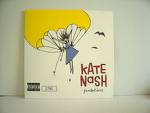
L'Oreal is all over the press with a particularly cruel ad. "If you think it's just wrinkles that age you, think again," nags the nameless, faceless "science" voice from deep inside its Parisian laboratories.
Two images of the same woman's face appear side by side. One has dark wrinkles drawn all over it but is otherwise taut; the other is without wrinkles but does have sagging jowls , jaw and eyes. The first face is flushed with a pinkish hue, while the second is noticeably yellow - a classic ageing technique - but concentrate, because colouring is not relevant.
The grave voice continues: "In the image on the right, the woman looks older. Why? Because loss of skin contour definition can age you, just as wrinkles can". So presumably all that Andie-McDowell-wrinkly stuff L'Oreal has been pumping out for years was a only ever of limited use.
From my old job scrutinising advertising claims, I know nothing will make existing wrinkles and sags disappear forever, except perhaps surgery. Anti-ageing creams "work" in the sense that they create an optical illusion for as long as they are applied. Wrinkles can be temporarily plumped out (by adding irritants), and sags can be tightened by stretching skin (by adding plastic films), but the minute a woman stops applying cream, or it slides off during the day, the effect is gone. In other words, they don't "work" at all, but they do appear to work for the short times in the day that women are looking in mirrors.
L'Oreal is always careful to frame its product claims to reflect the truth. For example, Revitalift will "reduce the appearance of wrinkles and make the skin feel firmer". What L'Oreal means by "reduce the appearance" is "make wrinkles look smaller/fewer in number to the naked eye" (and then only for as long as Revitalift is slathered over the skin). What it doesn't mean, but what could be easily interpreted from the ads, is Revitalift will make wrinkles disappear, or stop appearing at all.
But back to sagging. To tackle the problem, L'Oreal has invented Collagen Skin Remodeller, a "re-defining day cream" for face and neck, recommended for women over 35 (L'Oreal loves age-brackets - it recommends girls make a start at age 15 with its Anti Re-greasing Moisturiser). Ther is even an accompanying online "morphing tool", which sees an 18 year-old hurtling through time to demonstrates the "14 signs of ageing" on her face. But whether L'Oreal intends "re-defining" in this context to mean tautening saggy jowls, or simply its own genius at revolutionising skin care, is not clear.
So what effect does L'Oreal claim Collagen Skin Remodeller will have on our shamefully saggy skin? "Skin looks more defined," says the ad.






